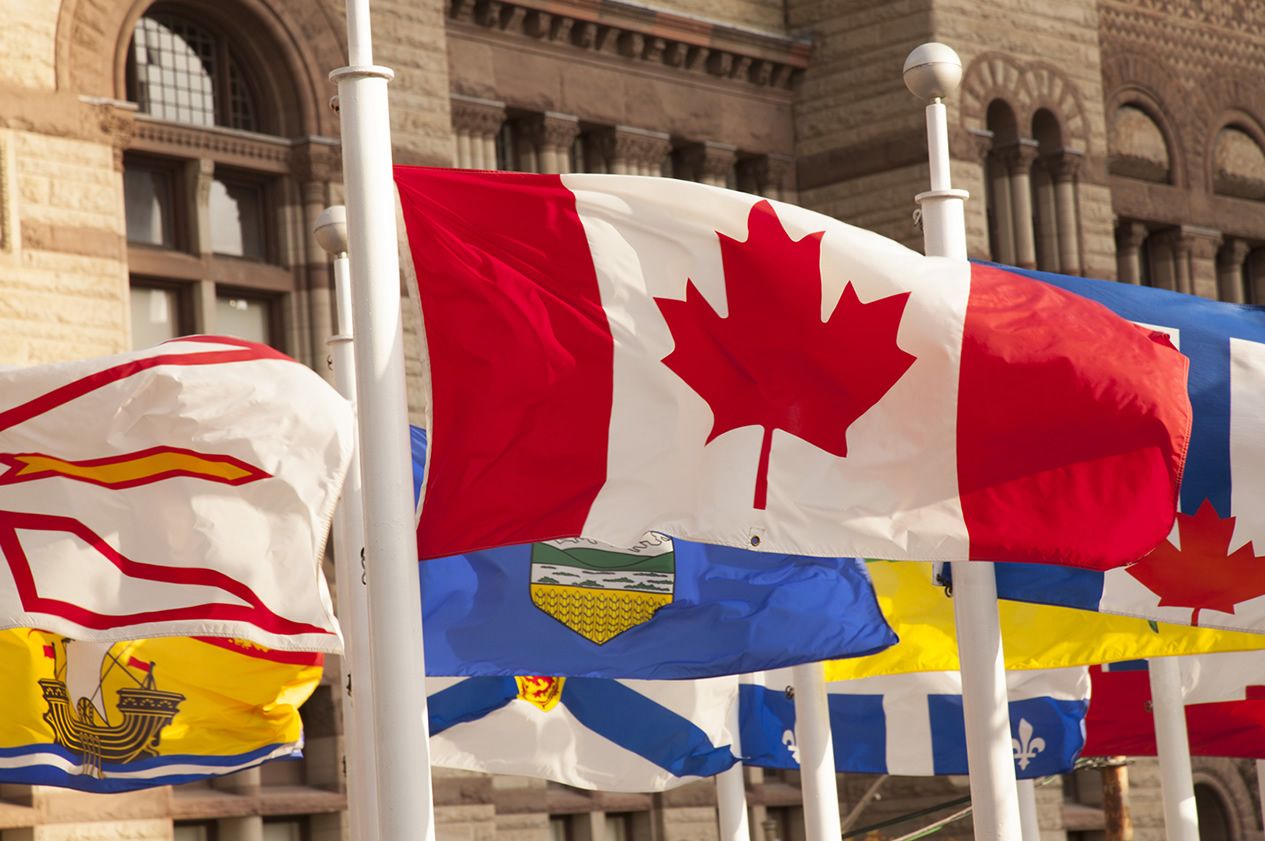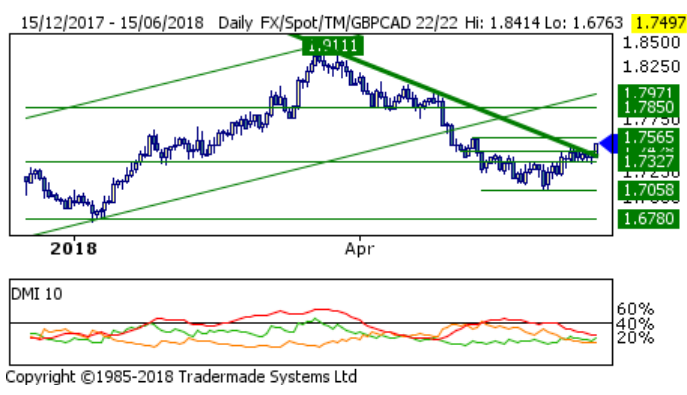Pound-to-Canadian-Dollar Rate Forecast for the Week Ahead: "Price Action is Consolidative"
- Written by: James Skinner
-GBP/CAD trades within ranges, set to drift higher this week.
-Bank of England interest rate decision in focus for Sterling.
-Retail sales and inflation in focus for the Canadian Dollar.

© Viv Idrange, Adobe Stock
The Pound-to-Canadian-Dollar rate traded sideways last week, holding the one-month highs seen at the beginning of June, and one strategist says the currency pair should continue to edge higher during the current week.
This Pound-to-Loonie price action belies the volatility seen in other Sterling exchange rates, with the Pound-to-Dollar rate having fallen by 200 points last week while the Pound-to-Euro rose 100 points. Relative calm in the GBP/CAD rate is the result of the Canadian Dollar and Pound both having seen sharp downward moves against the US Dollar.
The US Dollar strengthened last week after the Federal Reserve gave a clear indication it will raise interest rates more times this year than markets had previously thought and after US retail sales were shown rising at close to double the pace that economists had forecast for the month of May.
Strong US data has reignited the "divergence" narrative that had seen markets bid the Dollar higher at the expense of other currencies, due largely to faster growth and a brighter economic outlook over across the pond.
"GBPCAD has been trading relatively flat over the past few weeks but a case can be made for a little more optimism for the GBP in the nearterm at least with three successive weekly doji candles (“tri star” signal) helping the GBP nudge above the Mar/May bear trend today," says Shaun Osborne, chief FX strategist at Scotiabank. "We still rather think price action is consolidative and that the GBP needs to trade significantly higher—well through 1.7850—in order to reestablish any longer term strengthening potential."
Osborne says the Pound-to-Canadian-Dollar rate will meet resistance at the 1.7565 level this week, but that it should also see support around the 1.7425 area. The exchange rate was quoted at 1.7449, down 0.15% for the session, Monday morning in London.

Above: Graph showing Scotiabank technical analysis.
Data and Events to Watch for the Pound this Week
The week ahead in the UK sees the economic data calendar fall quiet after an action-packed five day period that saw industrial production figures for April underwhelm the market, while unemployment data showed the labour market remaining in rude health in May and retail sales figures showed consumer spending coming back with a bang during the recent month.
The Bank of England interest rate decision for June is the sole event of importance in the calendar for Sterling, due at 12:00 pm Thursday, and markets are looking for the central bank to hold rates steady at their current 0.50% level. It isn't expected to make changes to any other aspects of its monetary policy either, although markets will scrutinise the contents of the statement closely for clues as to how the Bank's views on the economy may have changed since its May meeting.
Economists and markets are currently looking to the August 02 monetary policy announcement for the next possible BoE rate hike. Pricing in interest rate derivatives markets implied an August 02 Bank Rate of 0.56% on Friday. If markets were really that confident about the BoE raising rates anytime soon then that implied rate would be somewhere closer to 0.75%.
Markets will also keep a close watch on the White House, China and European Union for signs of an escalation in the so called "trade war" after the US administration listed a large number of Chinese export goods that will be targeted by US tariffs over the coming days.
The move advances an earlier plan to pressure China into changing some of its trade practices and to voluntarily reduce its bilateral trade deficit with the US, but it also risks riling global financial markets if it looks at any point as if the two countries could be about to renew an earlier tit-for-tat tariff fight.
Tensions between the US and EU are also running high after President Trump slapped tariffs onto their steel and aluminium exports to the US.
Data and Events to Watch for the Canadian Dollar this Week
The week ahead in Canada sees the economic data calendar remain quiet for second consecutive week, with the main release of note being inflation and retail sales data for the month of May, which is due Friday at 13:30 London time.
Markets are looking for Canada's consumer price index to fall by 10 basis points to 2.1% for the month of May, although traders will look closer at the "core" consumer price measure for which forecasts are yet to become available.
Separately, and at the same time as the inflation data are released, markets will also focus on retail sales numbers due for the month of April.
Economists are looking for headline retail sales to have stalled in May, registering no change for the month.
However, the "core" retail sales that excludes large ticket items like automobiles from the numbers is expected to show consumer spending rising by 0.2% during the recent month, which would reverse the -0.2% contraction seen back in April.
Markets care about the retail and inflation data because it has significant influence over Bank of Canada policy decisions and it is interest rates that are the raison d'être for most moves in exchange rates.
Changes in rates, or hints of them being in the cards, are only made in response to changes in domestic inflation but impact currencies because of the push and pull influence they have on international capital flows and their allure for short-term speculators.
Pricing in interest rate derivatives markets suggests investors currently looking to July and November for the next interest rate rises from the Bank of Canada, which would leave the Canadian cash rate at 1.75%.
Advertisement
Get up to 5% more foreign exchange by using a specialist provider to get closer to the real market rate and avoid the gaping spreads charged by your bank when providing currency. Learn more here




